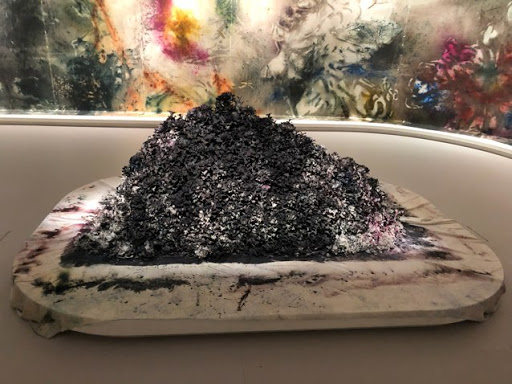Loc Van Ho
age ~79
from Santa Ana, CA
- Also known as:
-
- Loc V Ho
- Loc Vanho
- Loc Vho
- Phone and address:
-
122 N Maxine St, Santa Ana, CA 92703
7145544759
Loc Ho Phones & Addresses
- 122 N Maxine St, Santa Ana, CA 92703 • 7145544759
- Palo Verde, CA
- Stanton, CA
- San Juan Capistrano, CA
- Palos Verdes Peninsula, CA
- 4920 W 1St St, Santa Ana, CA 92703 • 7146150671
Work
-
Position:Protective Service Occupations
Emails
Us Patents
-
Mercury Reduction System And Method In Combustion Flue Gas Using Staging
view source -
US Patent:6895875, May 24, 2005
-
Filed:Nov 18, 2003
-
Appl. No.:10/714939
-
Inventors:Vitali Victor Lissianski - San Juan Capistrano CA, US
Peter Martin Maly - Lake Forest CA, US
William Randall Seeker - San Clemente CA, US
Roy Payne - Mission Vierjo CA, US
Vladimir M. Zamansky - Oceanside CA, US
Loc Ho - Sparks NV, US -
Assignee:General Electric Company - Schenectady NY
-
International Classification:F23J015/00
-
US Classification:110345, 110344, 423210
-
Abstract:A method to reduce mercury in gas emissions from the combustion of coal is disclosed. Mercury emissions can be reduced by staging combustion process and/or reducing boiler excess oxygen. Fly ash formed under combustion staging conditions is more reactive towards mercury than fly ash formed under typical combustion conditions. Reducing boiler excess oxygen can also improve ability of fly ash to adsorb mercury.
-
Mercury Reduction System And Method In Combustion Flue Gas Using Staging
view source -
US Patent:6981456, Jan 3, 2006
-
Filed:Dec 14, 2004
-
Appl. No.:11/010267
-
Inventors:Vitali Victor Lissianski - San Juan Capistrano CA, US
Peter Martin Maly - Lake Forest CA, US
William Randall Seeker - San Clemente CA, US
Roy Payne - Mission Vierjo CA, US
Vladimir M. Zamansky - Oceanside CA, US
Loc Ho - Sparks NV, US -
Assignee:General Electric Company - Schenectady NY
-
International Classification:F23J 15/00
-
US Classification:110345, 110347
-
Abstract:A method to reduce mercury in gas emissions from the combustion of coal is disclosed. Mercury emissions can be reduced by staging combustion process and/or reducing boiler excess oxygen. Fly ash formed under combustion staging conditions is more reactive towards mercury than fly ash formed under typical combustion conditions. Reducing boiler excess oxygen can also improve ability of fly ash to adsorb mercury.
-
Method And Apparatus For Utilization Of Partially Gasified Coal For Mercury Removal
view source -
US Patent:7249564, Jul 31, 2007
-
Filed:Jun 14, 2004
-
Appl. No.:10/866239
-
Inventors:Vitali Victor Lissianski - San Juan Capistrano CA, US
Peter Martin Maly - Lake Forest CA, US
William Randall Seeker - San Clemente CA, US
Loc Ho - Sparks NV, US -
Assignee:General Electric Company - Schenectady NY
-
International Classification:F23J 15/00
-
US Classification:110345, 110347, 110203, 95134
-
Abstract:A method for capturing mercury in a flue gas formed by solid fuel combustion including: combusting coal, wherein mercury released during combustion is entrained in flue gas generated by the combustion; generating a thermally activated carbon-containing sorbent by partially gasifying a solid fuel in a gasifier local to the combustion of solid fuel; injecting the gasified gas products into the combustion of coal; injecting the thermally activated sorbent in the flue gas, and collecting the injected sorbent in a waste treatment system.
-
Mercury Reduction System And Method In Combustion Flue Gas Using Staging
view source -
US Patent:7600479, Oct 13, 2009
-
Filed:Sep 29, 2005
-
Appl. No.:11/237949
-
Inventors:Vitali Victor Lissianski - San Juan Capistrano CA, US
Peter Martin Maly - Lake Forest CA, US
William Randall Seeker - San Clemente CA, US
Roy Payne - Mission Vierjo CA, US
Vladimir M. Zamansky - Oceanside CA, US
Loc Ho - Sparks NV, US -
Assignee:General Electric Company - Schenectady NY
-
International Classification:F23J 11/00
-
US Classification:110345, 110204, 95134
-
Abstract:A method to reduce mercury in gas emissions from the combustion of coal is disclosed. Mercury emissions can be reduced by staging combustion process and/or reducing boiler excess oxygen. Fly ash formed under combustion staging conditions is more reactive towards mercury than fly ash formed under typical combustion conditions. Reducing boiler excess oxygen can also improve ability of fly ash to adsorb mercury.
-
Methods For Removing Air Pollutants From Combustion Flue Gas
view source -
US Patent:56701225, Sep 23, 1997
-
Filed:May 23, 1996
-
Appl. No.:8/652104
-
Inventors:Vladimir M. Zamansky - San Clemente CA
Loc Ho - Anaheim CA
William Randall Seeker - San Clemente CA -
Assignee:Energy and Environmental Research Corporation - Irvine CA
-
International Classification:C01B 2100
C01B 1720
C01B 3118
C07C 1124 -
US Classification:423210
-
Abstract:A method is provided for preventing the release of air pollutants with combustion flue gases emitted to the atmosphere by the removal of one or more of nitric oxide, sulfur trioxide, light hydrocarbons, carbon monoxide, and trace amounts of mercury from combustion flue gas streams. The method converts nitric oxide to nitrogen dioxide, sulfur trioxide to sulfur dioxide, removes light hydrocarbons in the form of carbon dioxide, reduces the concentration of carbon monoxide, and removes mercury vapor in the form of mercury oxide, by the addition of hydrogen peroxide or a mixture of hydrogen peroxide and methanol to a combustion flue gas at a temperature in the range from about 650 K (377. degree. C. ) to 1100 K (827. degree. C. ).
-
Methods For Controlling N.sub.2 O Emissions And For The Reduction Of No.sub . .Sub.x Emissions In Combustion Systems While Controlling N.sub.2 O Emissions
view source -
US Patent:52700259, Dec 14, 1993
-
Filed:Mar 25, 1992
-
Appl. No.:7/858316
-
Inventors:Loc Ho - Anaheim CA
Shih L. Chen - Irvine CA
William R. Seeker - San Clemente CA
Peter M. Maly - El Toro CA -
Assignee:Energy & Environmental Research Corp. - Irvine CA
-
International Classification:C01B 2100
C01B 1700
C01B 1720
B01J 800 -
US Classification:423235
-
Abstract:Method for controlling N. sub. 2 O emissions from stationary combustion systems having variable flue gas temperatures are disclosed. The N. sub. 2 O emissions are controlled by the introduction of a N. sub. 2 O control agent, such as an alkaline compound, into the effluent stream. In addition, the present invention discloses methods for controlling N. sub. 2 O emissions from stationary combustion systems having variable flue gas temperatures while reducing NO. sub. x emissions. Use of an NO. sub. x reducing agent and an N. sub. 2 O control agent, such as urea and monosodium glutamate, enlarges the temperature window for effective selective noncatalytic NO. sub. x reduction while significantly eliminating N. sub. 2 O emissions commonly experienced with urea injection. Further, the present invention discloses methods for controlling N. sub.
-
Methods For Enlarging The Useful Temperature Window For No.sub.x Reduction In Combustion Systems
view source -
US Patent:51165848, May 26, 1992
-
Filed:Apr 5, 1991
-
Appl. No.:7/681697
-
Inventors:Shih L. Chen - Irvina CA
William R. Seeker - San Clemente CA
Loc Ho - Anaheim CA -
Assignee:Energy and Environmental Research Corporation - Irvine CA
-
International Classification:C01B 2100
-
US Classification:423235
-
Abstract:Methods for reducing NO. sub. x emissions from stationary combustion systems having variable flue gas temperatures are disclosed. Use of an annonium salt of an organic acid enlarges the temperature window for effective selective noncatalytic NO. sub. x reduction thereby accounting for variable flue gas temperatures. Currently preferred ammonium salts of organic acids include ammonium formate, ammonium acetate, and ammonium oxalate. Mixtures of urea and either an ammonium salt of an organic acid or a metallic salt of an organic acid provide an even greater temperature window for NO. sub. x reduction. Currently preferred metallic salts of organic acids include Ca(COOH). sub. 2, Ca(CH. sub. 3 COO). sub. 2, Ca(C. sub. 2 H. sub. 5 COO). sub. 2, Mg(COOH). sub. 2, Mg(CH. sub. 3 COO). sub. 2, and Mg(C. sub. 2 H. sub. 5 COO). sub. 2.
Name / Title
Company / Classification
Phones & Addresses
President
DAL - ARCH AND CONSTRUCTION, INC
10832 Capital Ave STE 5K, Garden Grove, CA 92843
Resumes

Loc Ho
view sourceYoutube
Classmates

Loc Ho
view sourceSchools:
North East High School North East PA 1981-1985

Loc Ho
view source
Loc Ho
view source
Eric Loc Ho
view source
Loc Ho
view source
Loc Huu Ho
view source
Loc Mary Ho
view source
Loc Ho
view source
Loc Ho
view sourceGoogleplus

Loc Ho
Tagline:
Vui vẻ,hiền lành,dễ thương

Loc Ho

Loc Ho (Loc Huu Ho)

Loc Ho

Loc Ho

Loc Ho

Loc Ho

Loc Ho
Plaxo

Loc Ho
view sourceDesign Lead at IndustryNext Inc.
Myspace
Get Report for Loc Van Ho from Santa Ana, CA, age ~79








